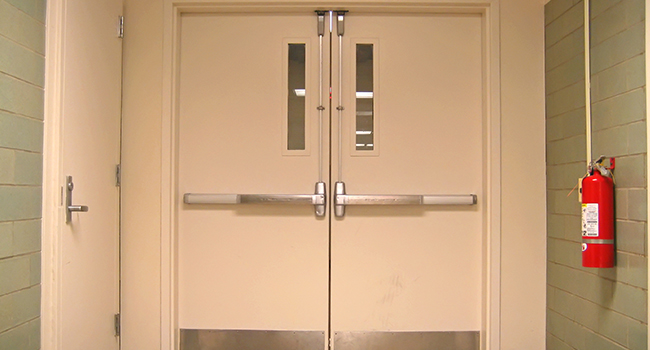
Marshall County Schools Review Safety Changes Following 2018 Shooting
At the time of the shooting, Marshall County High School only had one resource officer; Lovett has hired four more for the county since then. Three of the SROs primarily work at the high school and two are stationed at the middle schools but rotate to the various elementary schools.
- By Jessica Davis
- January 28, 2019
Marshall County School District administration have made changes to school safety and security in the last year, following the Jan. 23, 2018, shooting at Marshall County High School, in which 18 people were injured and 2 were killed.
“The students said, ‘We would like for you to do a book bag check, check all the backpacks that are brought into the school,’” Superintendent Trent Lovett told The Murray State News. “Starting on that Monday after, my staff from the central office, along with teachers and administrators from the high school, started checking every bag that was brought into the school.”
Beginning this school year, students have to walk through metal detectors when entering the school. Elementary school students are only allowed to carry clear or mesh backpacks, and backpacks are entirely banned at the high school and middle school.
“Students can bring purses and lunch boxes within a certain size, they can take the item through the metal detector with them,” Lovett said. “Athletic bags are also allowed. They can either take it through the metal detector with them, or they can take it to a station to be searched.”
If the metal detectors are triggered by something metal in a student’s bag, the student is directed to a separate line to have their bags checked.
At the time of the shooting, Marshall County High School only had one resource officer; Lovett has hired four more for the county since then. Three of the SROs primarily work at the high school and two are stationed at the middle schools but rotate to the various elementary schools.
The school resource officers are responsible for checking entrances and exits to ensure the building is secure and doors are locked. Lovett said that a new buzzer system was added this year as well.
“We added more security measures on certain doors,” Lovett said. “The building was built in 1974 with 86 doors; you could go in or out all of them. We have added buzzers to certain doors, if someone lets someone in, a buzzer goes off to notify us that someone has opened the door.”
The district has also added more active shooter trainings to the county’s schools.
“The high school had been through active shooter training prior to the shooting,” Lovett said. “Since then, some of our other schools have been through it, and now we have added additional schools to go through the training as well.”
The district was awarded $138,213 in grants to help implement Project School Emergency Response to Violence (SERV), which provides support for districts working to restore a sense of safety and security after experiencing a traumatic event.
“We have each other’s back, as you could say,” Lovett said. “It’s a great place to live, it’s the surrounding counties as well that have been great in their outreach to us and the support they have shown.”
About the Author
Jessica Davis is the Associate Content Editor for 1105 Media.